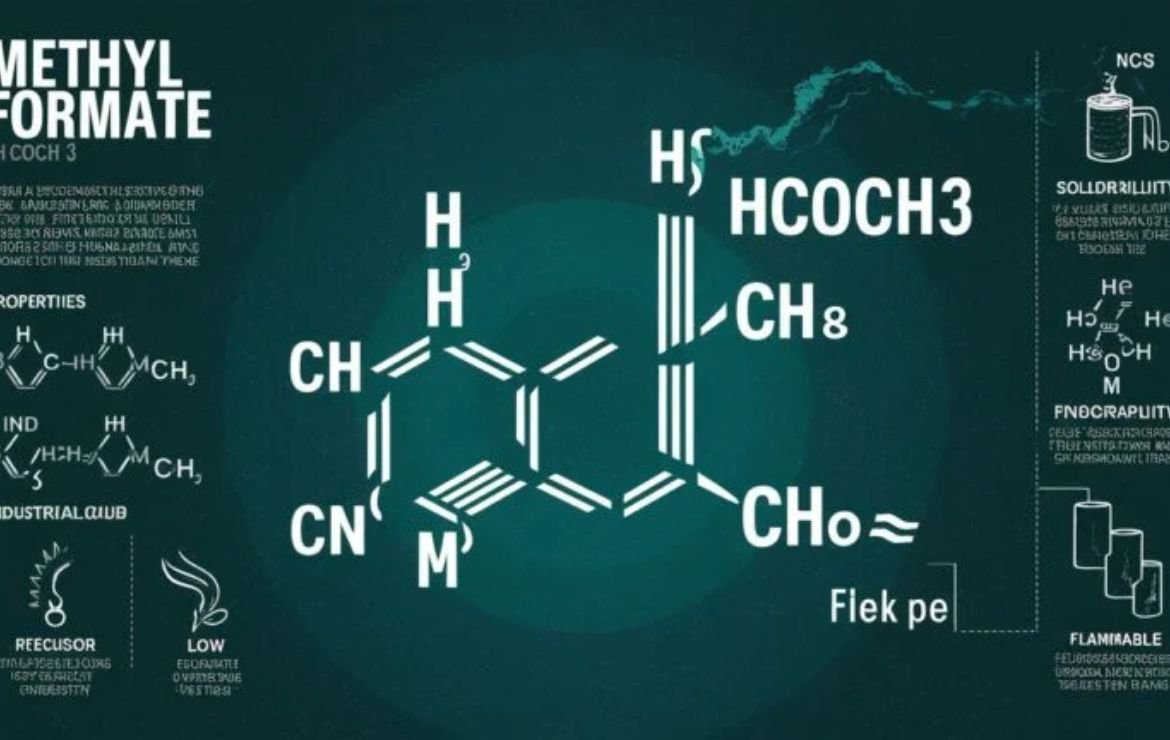In organic chemistry, understanding the interactions between compounds is crucial for predicting reaction outcomes and synthesizing desired products. One such interesting reaction involves methyl formate (HCOOCH₃) and methylene (CH₂), leading to the formation of water (H₂O) as a byproduct. This article explores the reactivity of these compounds, the reaction mechanism, and the significance of water generation in organic synthesis.
What is HCOOCH₃ (Methyl Formate)?
Methyl formate is an organic ester with the chemical formula HCOOCH₃. It is derived from formic acid (HCOOH) and methanol (CH₃OH). Known for its fruity odor, methyl formate is commonly used as a solvent, a blowing agent in manufacturing foams, and a starting material in chemical synthesis.
Key Properties of HCOOCH₃:
- Molecular Formula: C₂H₄O₂
- Molar Mass: 60.05 g/mol
- Structure: Contains both formyl and methoxy functional groups
- Polarity: Polar, with moderate reactivity
Understanding CH₂ (Methylene) in Reactions
Methylene (CH₂) is a highly reactive carbene intermediate, often represented as :CH₂. Due to its divalent nature and unpaired electrons, it participates in a variety of organic reactions such as insertions, additions, and rearrangements.
CH₂ Characteristics:
- Extremely reactive and short-lived
- Typically generated in situ (in the reaction mixture)
- Plays a key role in forming carbon-carbon bonds
The Reaction: HCOOCH₃ + CH₂ → H₂O and More
While the exact mechanism may vary depending on the reaction environment and catalysts, the interaction between HCOOCH₃ and CH₂ often leads to dehydration reactions where water (H₂O) is formed as a byproduct.
General Reaction Pathway:
- Nucleophilic attack: CH₂ attacks the electrophilic center of HCOOCH₃ (usually the carbonyl carbon).
- Intermediate formation: A reactive intermediate is formed.
- Dehydration step: Loss of a water molecule occurs during the rearrangement or elimination phase.
- Product formation: A more stable organic product is formed, and H₂O is released.
Why is Water Formation Important in Organic Reactions?
The generation of water in reactions is often a clue that condensation or elimination is occurring. In industrial and synthetic chemistry, understanding water formation helps:
- Predict product formation
- Balance chemical equations
- Control reaction conditions (e.g., using drying agents or azeotropic distillation)
Water generation can also be leveraged to drive reactions forward using Le Chatelier’s Principle, especially in esterification and dehydration processes.
Applications of the HCOOCH₃ + CH₂ Reaction
While this specific reaction might not be as commonly used in industry as others, its principles are foundational for:
- Designing synthetic pathways
- Understanding reactivity trends
- Developing catalysts for selective transformations
In advanced organic synthesis, reactions involving reactive intermediates like CH₂ are key to constructing complex molecules used in pharmaceuticals, agrochemicals, and materials science.
Safety and Handling Considerations
- Methyl formate is flammable and may cause irritation. Proper ventilation and PPE are required.
- Carbene intermediates (like CH₂) are extremely reactive and must be handled under controlled laboratory conditions, often in the presence of inert atmospheres (e.g., nitrogen or argon).
Conclusion
The interaction between HCOOCH₃ and CH₂ highlights the nuanced complexity of organic reactions. The formation of water (H₂O) as a byproduct is a critical feature that offers insight into the underlying reaction mechanism. Whether you’re a student, researcher, or chemist, understanding such reactions deepens your knowledge of organic reactivity and helps in the design of efficient chemical processes.
